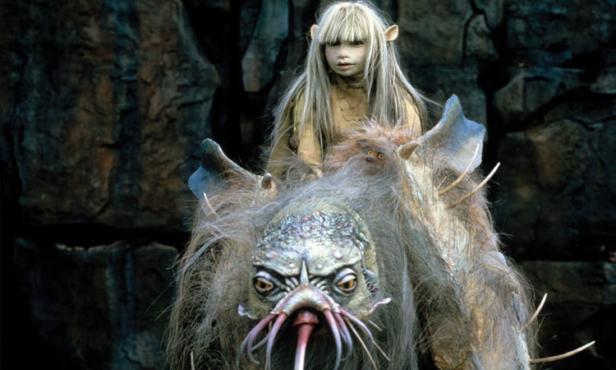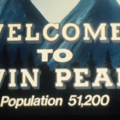There’s a look that people get when you mention the words “The Dark Crystal”. It’s usually followed by them telling you that Jim Henson and Frank Oz’s 1982 classic scared the life out of them as children, whether it was the “Trial by stone!” or the poor little Podling having his life essence drained out of him. It was a film that understood that children don’t need to be talked down to, that they can handle challenging material even if it leaves them hiding behind the sofa.
“Well, yes, what’s interesting is when we were making the film it never really occurred to us that it was for children!” laughs Brian Froud, the artist behind the world of the film and many of the creatures. “We made the film that we wanted to see. We just wanted it to be the most extraordinary tale told in a way that was innovative, using puppets and pushing the boundaries of that and I think oddly enough we didn’t really think about who was going to watch it. I think that caused a lot of confusion about it. Having said that, I’ve found looking back that the kids aged nine really get it, and then it’s all ages.
“So indeed, we didn’t want to talk down to children, it wasn’t meant to be fluffy entertainment,” he continues. “It had some depth to it, and that’s why I think it continues to have an effect to this day. It’s not just all on the surface; there’s something going on underneath.”
Froud would go on to collaborate with Jim Henson on Labyrinth, but The Dark Crystal was the first time the artist of Faeries, Trolls and the Lady Cottington series had worked on a live action film. We spoke to him about his collaboration with Henson, what we lose with CGI and his favourite creature…
When was the last time you saw The Dark Crystal?
I don’t watch it very often. Everybody else seems to have watched it more often than I have and when my son was young he watched it all the time. It took a long time for me to associate the music to the film with the film. What I associated it with was the struggle of trying to get images onto the screen, what it was like on the set, it was dirty and dusty and noisy, and all the emotions were wrapped up in the making of it. And it was actually ten years or so before the music kicked in as the emotions of the story.
Looking at the film is often quite problematical because you see the mistakes. It’s very interesting to be part of the creative process but you don’t always have a perspective of it from a distance. It’s been extraordinary to discover how the film has turned into this classic, it’s had this life of its own. We worked on it for five years and let it go out into the world and it’s on this extraordinary journey, and here it is again.
The fact that there are no human beings at all in The Dark Crystal seems pretty remarkable…
We didn’t consider having human beings in it. The challenge was for me to create a whole world, and we knew that it needed a mythological sense to it, so I had to try and create a world that you believed had been there for thousands and thousands of years and had a history. We were just dipping into one moment in time in the film.
I live on the edge of Dartmoor and in the early days of the film Jim Henson came to see me here. He loved the landscape, and he also loved the history of Great Britain and its mystic qualities of standing stones, ley lines and hidden things and he wanted some of that feeling in the film and that’s what we have done.
Everything you can see in the film hides another secret, hides other layers, everything is connected. Jim was really keen on everything having a life. What we would call inanimate rocks or plants, all that had a life of their own. Everything linked with each other and I think that’s what really shines out of the film and why people still respond to it now.
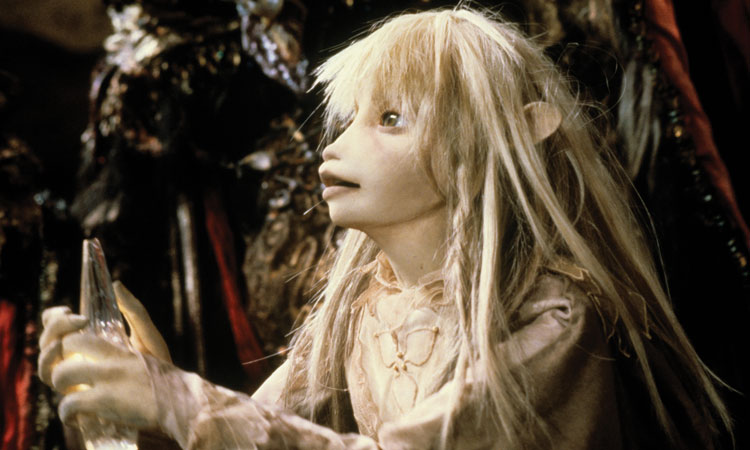
How early in the production process did Jim Henson approach you?
It was really early. Jim had seen my work, I’d gone to see him while they were working on The Muppet Show in England and he thought I would be the person to design these new characters he wanted. He was really keen on my trolls. Also, he didn’t know that I was actually making puppets, strange ones and things made out of chicken bones and snail shells, weird things like that.
He said: “Come to New York and let’s start on it,” so when I got there we gathered about nine people to start to work out prototypes and I was there sketching.
Jim and [co-director] Frank Oz would come by and they would start to talk about the film. Jim had had an idea of these sort of reptile creatures living in a castle; that was the germ of the idea, and I started drawing. I went through various shapes and forms for these reptiles that turned into the Skeksis and Jim had this idea of the splitting of the characters, the deep mysticism of the film, and we thrashed it out as a group in the early days. And then we kept on building prototypes. And we kept building and building and building until five years later we finally finished it!
Was collaborating a process that you enjoyed?
Yes, it was slightly tricky at the beginning. It took me a little while to figure out how to articulate what I needed and what to do, how to change the shapes, what feeling I wanted and how to say that and get people to do that.
At the same time, it’s no good blocking the energy, I was really solicitous to everybody’s talents and Jim liked everybody’s creativity.
You’ve got to corral it, you have got to keep it going in the right direction and at the same time allowing everybody’s individual little spark to be part of the film. Because when we’re building this stuff, it’s an odd thing but puppets don’t do very much! They’re made of dead stuff, they’re made of things, metal and wood and bits of cloth and rubber, and the trick is to give it life and make it feel alive. We did it by working really hard on developing textures and forms and to bring something that is inanimate into a magical reality.
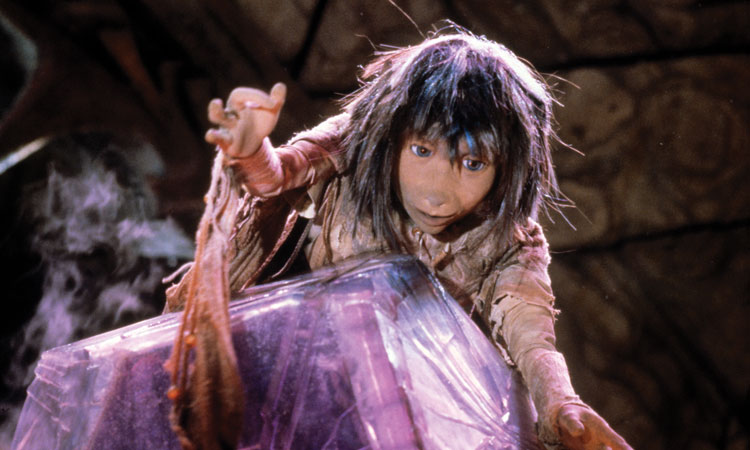
There’s such a strong emotional connection with those characters…
It’s the little things. It’s the thing that makes a human, human, which is quirky strange movements, all the mistakes… things that are not quite right give it life. Whereas the danger of CGI is that all the movements are rounded, it’s rather mechanical and you don’t believe it’s alive. I think that’s why it’s intriguing to see the film now, just to see how far ahead of the game we were then and how much has been lost in some of the direction of CGI.
Do you have a favourite creature from The Dark Crystal?
Not necessarily. I love the Skeksis only because they’re so ridiculous. I just think they’re so funny because they are over the top and they have a dark resonance that I love, because you can’t tell quite what they are. Are they a turkey? Are they a dinosaur? There’s something from the Renaissance, I love that, they’re quite delicious.
At the same time, Jim wanted the Mystics to look like my early drawings which were the trolls, so to see my work come to life on a big screen… The first day of shooting we shot the Mystics walking up the edge of Mystic Valley and we showed it in a cinema in Leicester Square, just to see what it looked like on a big screen, and for ten minutes we just watched them go up, in the film it’s about three or four seconds. But Gary Kurtz who was one of our producers came up to me shaking his head and said: “Oh dear, Brian, the Mystics really blend into the background, we can’t see them.” I just said “How wonderful! Isn’t it marvellous!” Because it did exactly what I wanted it to do, the creatures were part of the landscape, you thought it was seamless and it actually brought one of my paintings to life. And I don’t think it ever got any better than that moment.
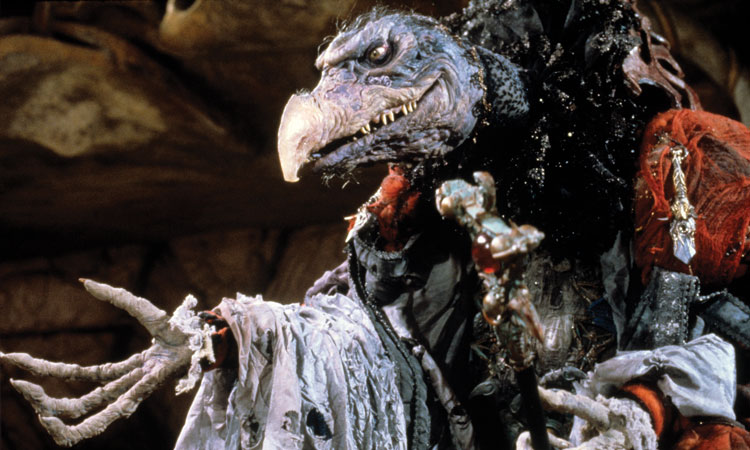
How does it feel to see that the film still has such a connection with audiences?
It’s fascinating because at the time it wasn’t rated as a film by the critics, and a lot of people at the time didn’t really understand it or get it. However, over the years when I meet people or I’m signing books, they all say something rather similar about how when they were young the film really affected them. And it’s interesting, it’s nearly always a creative response. They either say: “I wanted to get into the movie business because of that,” or “I wanted to do art,” or “I wanted to write,” and it’s always something creative.
I know Jim Henson was disappointed at the time by the response to the film and was disappointed at how poorly it did financially, but he was very proud of the film itself and he would be absolutely delighted now to discover what an extraordinary effect it’s had and what a resonance the film has to this day.
The Dark Crystal is out now on 4K Ultra HD™, Blu-ray™ and DVD. The Dark Crystal: The Ultimate Visual History is available now from Titan Books.
